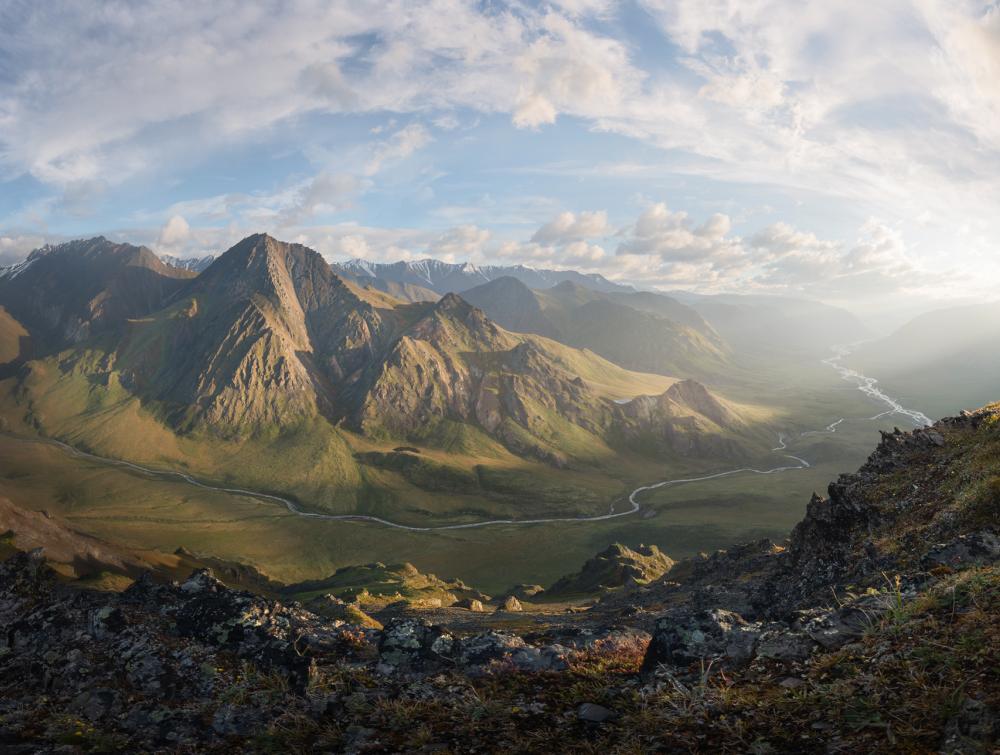4 reasons Trump's Interior deputy pick is troubling

Arctic National Wildlife Refuge, Alaska
Mason Cummings, TWS
Lobbyist David Bernhardt's pro-fossil fuel stance and conflicts of interest a huge concern
Lobbyist David Bernhardt has been nominated as the deputy secretary of the Department of the Interior. His pro-fossil fuel stance and conflicts of interest are a huge concern for defenders of public lands.
The Trump administration has already established itself as a fossil fuel-centric regime that is, at best, dismissive of America's public lands and the people who love them. Now, in the wake of an executive order that threatens numerous national monuments and the bedrock law that made their protection possible, the president doubled down by nominating a longtime special interest lobbyist and consummate DC insider, David Bernhardt, to be second-in-command to Interior Secretary Ryan Zinke.
Here are four big problems we have with Bernhardt's nomination:
1. He could push drilling in the Arctic National Wildlife Refuge
Among other things, the dawning of the Trump era has placed a bulls-eye squarely on America's last, wildest frontier—the Arctic National Wildlife Refuge, whose ecologically rich coastal plain is being targeted for drilling with renewed fervor by special interests and the politicians who answer to them. David Bernhardt seems likely to be at the forefront of that movement.
As a high-ranking staffer at the Department of the Interior under President George W. Bush, he presided over--and may have contributed to—a report to Congress that misrepresented scientific information about the importance of the Arctic Refuge coastal plain to caribou herds, in an apparent attempt to downplay potential impacts of drilling. In 2005, while oil companies soured on the prospects of the refuge, Bernhardt touted questionable data to talk up petroleum reserves in the area and keep it on the industry's radar.
After exiting Interior and re-entering the world of lobbying, Bernhardt even represented the state of Alaska in a lawsuit against his former agency that argued for the right to conduct an oil survey in the refuge with an eye toward opening it for development. If confirmed, there is little doubt Bernhardt would be an advocate for drilling in the Arctic.
2. He is yet another Trump appointee who sees fossil fuel as the primary use of public lands
Beyond his dealings in the Arctic, Bernhardt is deeply enmeshed in the fossil fuel-ocracy that now holds sway in Washington DC. Following his first stint at Interior, he returned to his lobbying firm to advocate for a number of energy and mining companies, including to obstruct rules that cut air pollution and to increase oil and gas drilling. At least one of those companies, Sampson Resources Company (which declared bankruptcy in September 2015), retained his services to work on “issues regarding the development of energy on federal lands.” And during his lengthy tenure at Interior during the Bush administration, he held key positions overseeing a relentless push to “drill, baby, drill” by removing impediments to drilling in land use plans.
Bernhardt's cozy relationship with the extractive industries suggest he would be yet another Trump official who kowtows to oil and gas companies rather than acting as a legitimate steward of our natural resources.
3. His resume is a minefield of conflicts of interest
In late March, the Trump administration set the stage for a long-paused project that would pump some 814 billion gallons of groundwater out from under the Mojave Desert and sell it to California cities. The plan could end up hurting public lands, wildlife and local communities. The twist: the CEO of the company leading the project—Cadiz--is tied to the powerful law firm Brownstein, Hyatt, Farber, Schreck, which also owns shares in the company—and where Bernhardt is an attorney. If Bernhardt is confirmed at Interior, he could have a say in a controversial decision that directly affects his former colleague's company (indeed, as a member of the Trump transition team, Bernhardt could already have influenced the administration's early decision to champion the project and remove regulatory impediments—and some have leveled precisely that charge).
This exemplifies the vast tangle of conflicts of interest and other ethically dubious relationships that make up Bernhardt's CV, which includes stints lobbying for several different energy and mining companies after working at Interior between 2001 and 2009. If he were to join Interior again, it would be extremely difficult to ensure he represents only the nation, and not various special interests. As a former senior Interior staffer told one media outlet, “He is going to be working on policies affecting clients for whom he lobbied just months ago.” If confirmed, Bernhardt would need to recuse himself from decisions involving his former clients for one year, but the specifics of that clause remain unclear—and he could apply for waivers.
4. He has stood against science on wildlife protection
In 2007, Julie MacDonald, the Interior Department's deputy assistant secretary for fish, wildlife and parks, resigned following reports that she rejected or heavily edited scientists' advice on which animals and plants to recommend for protection under the Endangered Species Act (including the greater sage-grouse). She had acted as a virtual in-house advocate for special interests, urging staff to weigh the opinion of ranchers and others while mocking scientific concerns. Bernhardt stood by her in his capacity as Interior solicitor, casting doubt on his ability to prioritize sound science over political considerations. In fact, if confirmed, he might be in position to affect conservation plans developed for...you guessed it, the greater sage grouse.
We will be watching Bernhardt's confirmation hearing closely and are ready to respond to the next big threat from the Trump administration.
